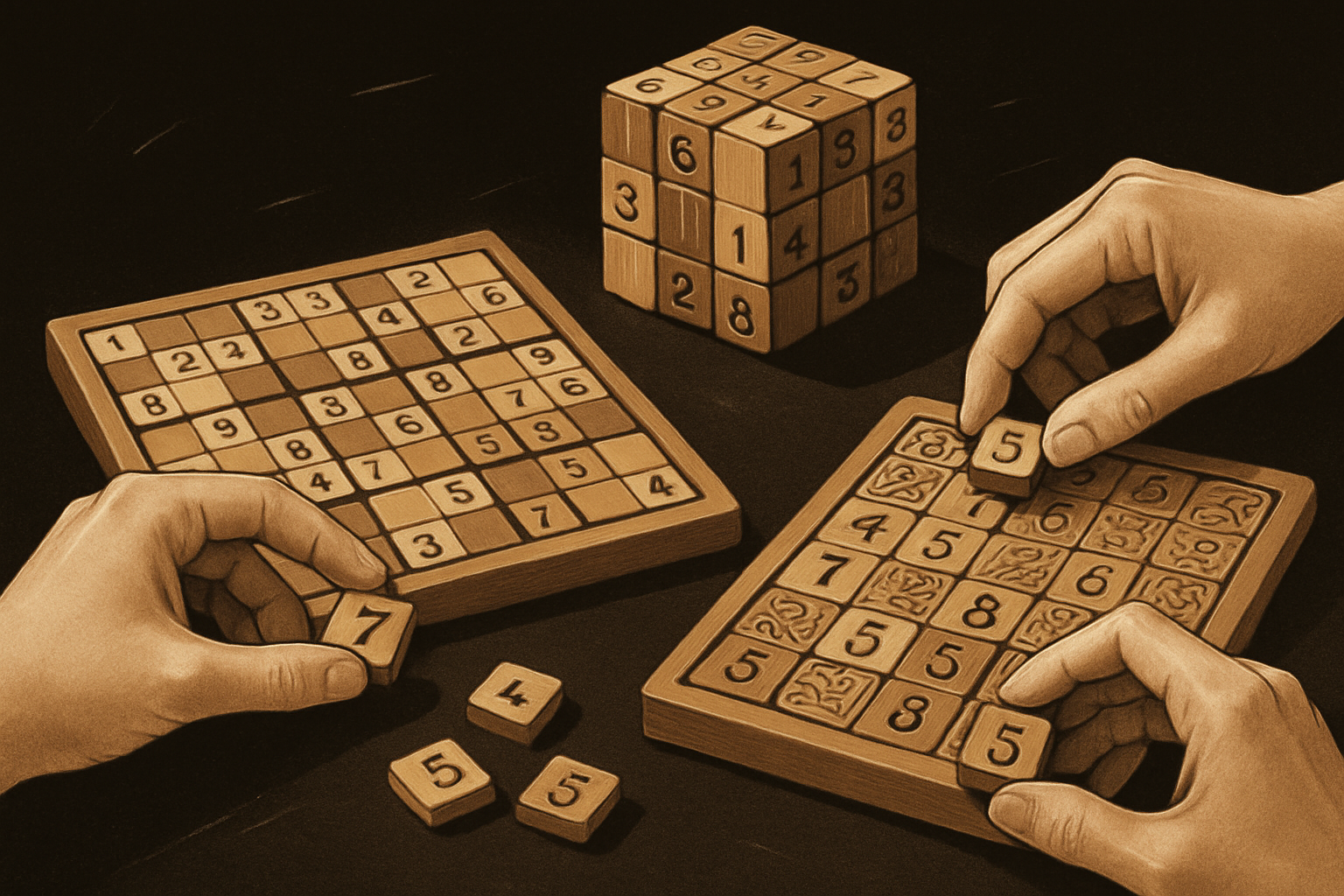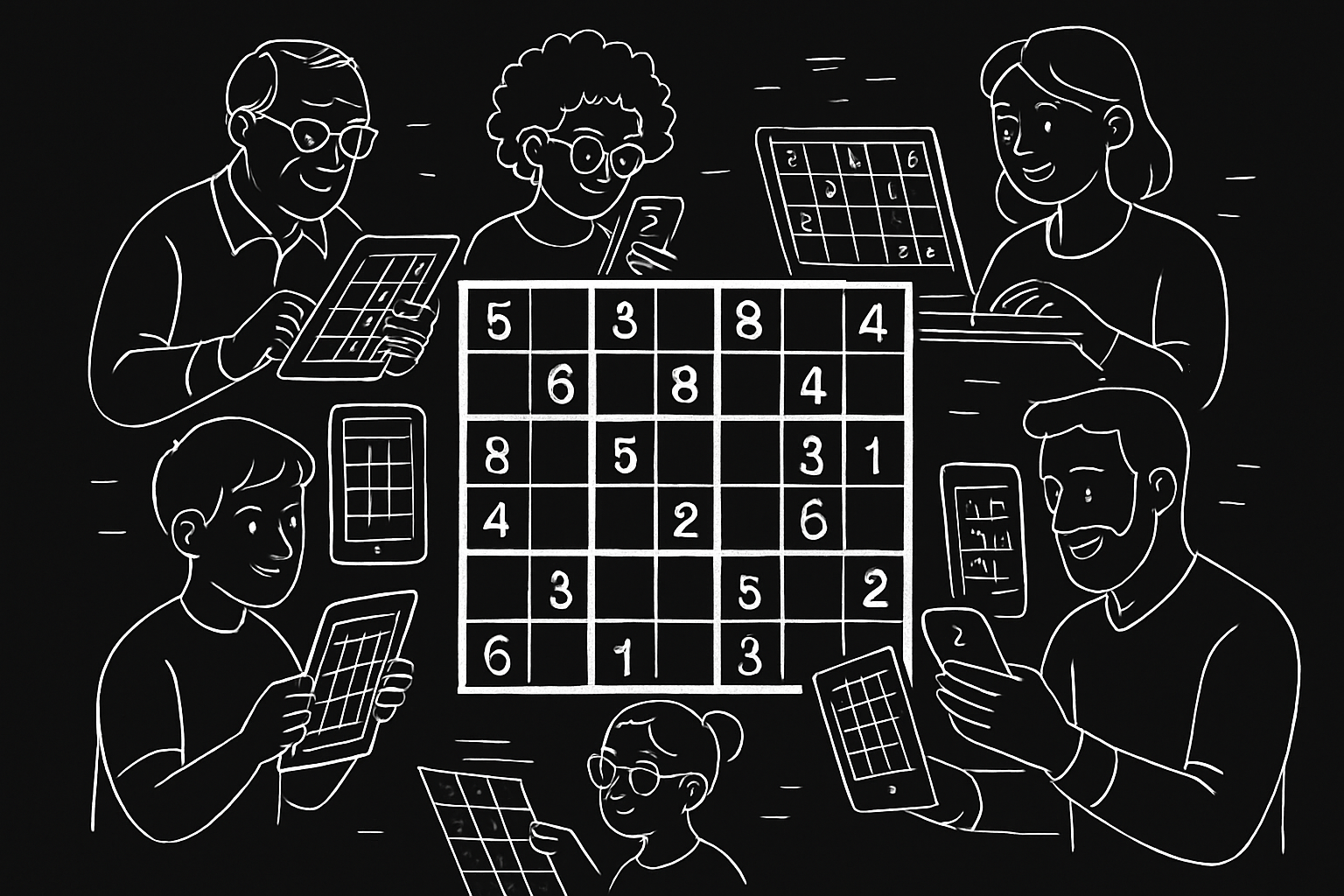Sudoku is an incredibly versatile game, appealing to players of all skill levels, from beginners to seasoned puzzle enthusiasts. One of the reasons for its universal popularity is the range of Sudoku puzzle types and difficulty levels, allowing players to choose puzzles that match their abilities and offer a challenge when they’re ready to advance. In this guide, we’ll explore the different levels of Sudoku difficulty, the variety of puzzle types available, and strategies for tackling each.
Understanding Sudoku Difficulty Levels
Sudoku puzzles are typically categorized by difficulty levels, which reflect how challenging the puzzle is to solve. The difficulty level is determined by the number of “givens” (pre-filled numbers) in the grid and the complexity of the logic required to complete it. Let’s break down the four common difficulty levels:
1. Easy Sudoku
Easy Sudoku puzzles have more clues (usually 36 or more) and are designed to help beginners understand the basic rules and strategies of Sudoku. These puzzles can often be solved using simple logic and scanning techniques without the need for advanced strategies.
- Best For: Beginners who are just starting out with Sudoku or those looking for a quick, relaxing puzzle.
- Key Strategies: Scanning rows, columns, and subgrids to fill in obvious numbers.
2. Medium Sudoku
Medium Sudoku puzzles strike a balance between simplicity and complexity, with fewer givens (typically 27-35). Players may need to employ basic strategies such as elimination and pencil marking to narrow down possible numbers.
- Best For: Players who are comfortable with easy puzzles and ready to step up the challenge.
- Key Strategies: Pencil marking, elimination of impossible numbers, and scanning multiple rows and columns simultaneously.
3. Hard Sudoku
Hard Sudoku puzzles have fewer clues (around 20-26) and require players to use more advanced techniques to fill in the grid. These puzzles often introduce scenarios where simple scanning isn’t enough, and players must rely on techniques like naked pairs or box-line reduction.
- Best For: Intermediate players looking to improve their problem-solving skills with more challenging puzzles.
- Key Strategies: Advanced elimination methods, naked pairs, and box-line reduction.
4. Expert Sudoku
Expert Sudoku puzzles have the fewest clues (usually fewer than 20), making them extremely challenging. These puzzles demand the use of advanced strategies like X-Wing, Swordfish, or even the unique chain rule to solve, often requiring deep logical thinking and patience.
- Best For: Advanced players who are familiar with complex solving techniques and want to push their limits.
- Key Strategies: X-Wing, Swordfish, chain rule, and other advanced tactics.
As you progress through these difficulty levels, you’ll find that understanding more advanced techniques becomes essential for solving the harder puzzles. But even beginners can enjoy the game, thanks to the wide availability of easy puzzles.
Factors that Determine Difficulty
Several factors contribute to the difficulty level of a Sudoku puzzle. Understanding these factors can help you choose puzzles that match your skill level and understand why some puzzles are more challenging than others.
- Number of Clues: The more givens you have in a puzzle, the easier it typically is to solve. Easy puzzles often start with more than 36 clues, while expert puzzles may have fewer than 20.
- Complexity of the Clue Placement: It’s not just the number of givens that matters, but how they are distributed. If the clues are scattered in a way that allows for straightforward logical progression, the puzzle will be easier. If they’re spread out in a way that requires more complex deductions, the puzzle will be harder.
- Logical Path: In easy puzzles, there is usually a clear logical path from start to finish. In harder puzzles, you may need to consider multiple possibilities for certain cells and apply advanced solving techniques to deduce the correct number.
These factors combined determine whether a Sudoku puzzle is easy or expert-level. Understanding them will help you gauge whether a puzzle is within your comfort zone or if you’re ready for a challenge.
Classic Sudoku Puzzle Types
Sudoku has evolved over the years to include many different puzzle types, each offering a unique twist on the original game. Here are some of the most popular types of classic Sudoku puzzles:
1. Classic Sudoku
This is the standard version of the game, played on a 9×9 grid. The objective is to fill each row, column, and 3×3 subgrid with the numbers 1-9, ensuring that no number repeats in any row, column, or subgrid.
- Best For: Players of all levels. It’s perfect for beginners and experts alike, with varying difficulty levels.
- Play Online: Websites like Sudoku.com and WebSudoku offer thousands of classic puzzles in different difficulty levels.
2. Mini Sudoku
Mini Sudoku uses smaller grids, such as 4×4 or 6×6, instead of the standard 9×9 grid. The same rules apply, but the smaller grid sizes make the puzzles quicker and simpler to solve.
- Best For: Beginners or those looking for a quick puzzle. Mini Sudoku is also great for children learning the game.
- Play Online: Available on apps and websites with options for fast, easy puzzles.
3. Samurai Sudoku
Samurai Sudoku consists of multiple overlapping 9×9 grids, usually five, which are connected at the corners. The player must solve all five grids while keeping the numbers in the overlapping sections consistent across all grids.
- Best For: Advanced players who want a complex and longer puzzle to solve.
- Play Online: Samurai Sudoku can be found on specialized puzzle websites or through downloadable printable puzzles.
Sum-Based Sudoku Puzzle Types
Sum-based puzzles add a mathematical twist to the regular logic of Sudoku by introducing additional rules based on sums.
1. Killer Sudoku
Killer Sudoku combines Sudoku with sum-based logic. The grid is divided into cages (groups of cells outlined by dashed lines), and each cage has a target sum. Players must place numbers in the grid to ensure that each cage’s sum is correct while following the standard Sudoku rules.
- Best For: Players who enjoy math-based puzzles and are ready for a higher level of difficulty.
- Play Online: Available on KillerSudoku.com and other online puzzle platforms.
2. Sumdoku (Sudoku with Sums)
Sumdoku is a simpler version of Killer Sudoku, where players must place numbers in cells so that the sums in specific rows or columns match given totals. This version is easier than Killer Sudoku but still requires logical thinking with a mathematical twist.
- Best For: Intermediate players looking to combine Sudoku with basic math skills.
- Play Online: Found on websites that offer a variety of Sudoku puzzle types.
Shape and Region-Based Puzzle Types
These Sudoku variations play with the shape of the grid or introduce additional regions that add complexity to the puzzle.
1. Jigsaw Sudoku
Jigsaw Sudoku follows the same basic rules as classic Sudoku, but instead of using regular 3×3 subgrids, the regions are irregularly shaped. The goal remains the same: place the numbers 1-9 in each row, column, and irregular region without repeating.
- Best For: Intermediate players who want a visual twist on the classic game.
- Play Online: Jigsaw Sudoku can be found on specialty Sudoku websites and apps.
2. Hyper Sudoku
Hyper Sudoku (also known as Windoku) is a variation that adds four overlapping 3×3 regions to the standard 9×9 grid. These additional regions must also contain the numbers 1-9 without repeating, adding an extra layer of complexity.
- Best For: Players who have mastered classic Sudoku and are ready for a new challenge.
- Play Online: Hyper Sudoku is available on apps and puzzle websites that offer advanced Sudoku variations.
Time-Based Sudoku Challenges
For players who enjoy a bit of extra pressure, timed Sudoku puzzles offer an exciting challenge. These puzzles require players to solve within a set time limit, adding an element of speed and competition to the game.
- Timed Puzzles: Some websites and apps feature leaderboards, where players can compete to see who can solve puzzles the fastest.
- Best For: Players who are confident in their solving speed and want to test themselves under time constraints.
- Play Online: Apps like Sudoku by Brainium and Microsoft Sudoku include timed modes and daily challenges.
Strategies for Different Difficulty Levels
Each Sudoku difficulty level requires a different approach. Here’s a brief guide on how to adjust your strategy based on the puzzle’s difficulty:
Easy and Medium Puzzles
- Strategies: Start by scanning the rows, columns, and subgrids for obvious numbers. Use elimination to rule out impossible options, and don’t be afraid to use pencil marks for possible candidates.
Hard and Expert Puzzles
- Strategies: For more difficult puzzles, you’ll need to use advanced techniques like Naked Pairs (where two cells can only hold the same two numbers) and X-Wing (a method for eliminating candidates by comparing rows and columns).
With practice, you’ll get better at recognizing which strategies to use for different levels of puzzles.
Where to Play Sudoku Online
Online platforms offer a vast selection of Sudoku puzzles, from easy to expert and across multiple variations. Some of the best sites and apps include:
- Sudoku.com: A great resource for classic Sudoku puzzles at all difficulty levels, including daily challenges and advanced modes.




